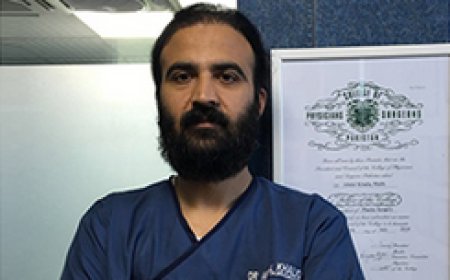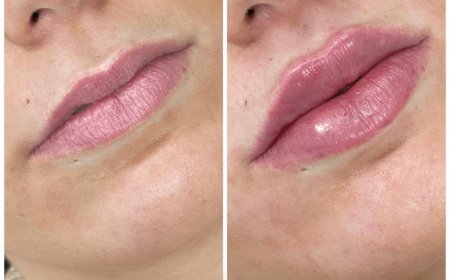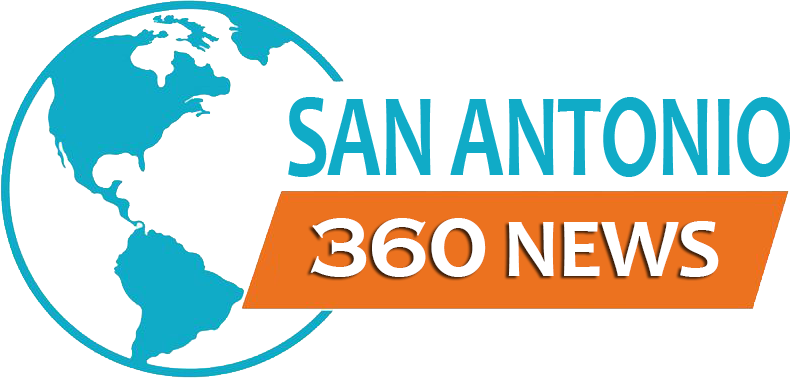Tennis Elbow Treatment: A Comprehensive Guide
Tennis elbow, medically known as lateral epicondylitis, is a common condition that causes pain and tenderness on the outer part of the elbow.

Tennis elbow, medically known as lateral epicondylitis, is a common condition that causes pain and tenderness on the outer part of the elbow. Despite its name, its not exclusive to tennis playersanyone who engages in repetitive arm or wrist movements can develop it. From office workers typing for hours to carpenters swinging hammers, this condition affects a wide range of people. In this comprehensive guide, well explore what tennis elbow is, its causes, symptoms, and a variety of treatment options to help you recover effectively. Whether youre seeking at-home remedies, medical interventions, or preventive strategies, this blog has you covered.
Understanding Tennis Elbow
Tennis elbow occurs when the tendons that connect the forearm muscles to the outer elbow become inflamed or develop small tears due to repetitive stress. The primary tendon affected is attached to the lateral epicondyle, a bony bump on the outside of the elbow. This condition typically results from overuse of the extensor carpi radialis brevis muscle, which helps lift the wrist and fingers.
While tennis players may develop it from repetitive backhand swings, others can get it from activities like painting, gardening, or even frequent smartphone use. The condition is most common in people aged 3050, but it can affect anyone who performs repetitive motions involving the wrist and arm.
Symptoms of Tennis Elbow
The hallmark symptom of tennis elbow is pain or tenderness on the outer elbow, which may radiate down the forearm. Other common symptoms include:
-
Pain with gripping: Holding objects, such as a coffee mug or a racket, can worsen the discomfort.
-
Weakness in the forearm: Tasks like turning a doorknob or shaking hands may feel difficult.
-
Stiffness: The elbow may feel stiff, particularly in the morning or after periods of inactivity.
-
Burning sensation: Some people experience a burning feeling on the outer elbow.
Symptoms typically develop gradually and may worsen with continued activity. If left untreated, the pain can become chronic, impacting daily life.
Causes and Risk Factors
Tennis elbow is primarily caused by repetitive microtrauma to the tendons. Specific activities that contribute include:
-
Repetitive motions: Tasks like typing, using tools, or playing sports that involve wrist extension or gripping.
-
Poor technique: Incorrect form during sports or manual tasks can strain the tendons.
-
Overuse: Performing the same motion repeatedly without adequate rest.
-
Inadequate equipment: Using tools or rackets that are too heavy or improperly sized can increase strain.
Risk factors include occupations like plumbing, carpentry, or cooking, as well as hobbies like gardening or playing musical instruments. Age and lack of forearm strength can also make you more susceptible.
Diagnosing Tennis Elbow
If you suspect tennis elbow, consult a healthcare professional for an accurate diagnosis. Diagnosis typically involves:
-
Physical examination: A doctor will assess pain and tenderness by pressing on the lateral epicondyle or asking you to perform specific wrist movements.
-
Medical history: Discussing your activities and symptoms helps identify the cause.
-
Imaging tests: While not always necessary, X-rays, MRIs, or ultrasounds can rule out other conditions like arthritis or nerve issues.
Early diagnosis is key to preventing chronic pain, so dont ignore persistent elbow discomfort.
Treatment Options for Tennis Elbow
Treating tennis elbow involves a combination of rest, pain relief, and strategies to promote healing and prevent recurrence. Below, we explore various treatment approaches, from self-care to medical interventions.
1. Rest and Activity Modification
The first step in treating tennis elbow is to rest the affected arm and avoid activities that worsen the pain. This doesnt mean complete immobilization, as gentle movement can promote healing. Key strategies include:
-
Pause aggravating activities: Avoid repetitive tasks like typing or lifting for a few weeks.
-
Modify movements: If you must perform certain tasks, adjust your technique to reduce strain. For example, use a neutral wrist position when lifting objects.
-
Gradual return: Once symptoms improve, slowly reintroduce activities to avoid re-injury.
Resting the tendon allows inflammation to subside and gives microtears time to heal.
2. Ice and Heat Therapy
Applying ice or heat can help manage pain and inflammation:
-
Ice therapy: Apply a cold pack to the outer elbow for 1520 minutes, several times a day, especially after activity. This reduces swelling and numbs pain.
-
Heat therapy: After the acute phase (usually 4872 hours), apply heat to relax the muscle and improve blood flow, aiding recovery.
Always wrap ice or heat packs in a cloth to protect your skin.
3. Stretching and Strengthening Exercises
Physical therapy exercises are crucial for recovery and prevention. A physical therapist may recommend the following:
Stretching Exercises
-
Wrist flexor stretch: Extend your arm with the palm facing down, then gently pull your fingers back with the other hand. Hold for 1530 seconds.
-
Wrist extensor stretch: Extend your arm with the palm facing up, then pull your fingers downward. Hold for 1530 seconds.
Strengthening Exercises
-
Wrist curls: Hold a light dumbbell (12 pounds) and slowly curl your wrist upward, then lower it. Perform 23 sets of 1015 reps.
-
Reverse wrist curls: With your palm facing down, lift the weight by extending your wrist. Start with light weights to avoid strain.
Perform these exercises under the guidance of a professional to ensure proper form and avoid worsening the condition.
4. Bracing and Supports
Wearing a counterforce brace or strap can reduce strain on the tendon. These devices wrap around the forearm just below the elbow, redistributing pressure away from the injured tendon. Tips for using a brace:
-
Proper fit: Ensure the brace is snug but not too tight.
-
Wear during activity: Use it during tasks that involve gripping or wrist movement.
-
Consult a professional: A physical therapist can recommend the best type of brace for your needs.
5. Pain Relief Medications
Over-the-counter medications can help manage pain and inflammation:
-
Nonsteroidal anti-inflammatory drugs (NSAIDs): Ibuprofen or naproxen can reduce pain and swelling. Follow dosage instructions and consult a doctor if using long-term.
-
Topical creams: NSAID gels or creams applied to the elbow can provide localized relief with fewer side effects.
Always consult a healthcare provider before starting any medication.
6. Physical Therapy
A physical therapist can create a tailored program to improve strength, flexibility, and function. Techniques may include:
-
Manual therapy: Massage or mobilization to reduce muscle tension and improve blood flow.
-
Ultrasound therapy: Uses sound waves to promote tissue healing.
-
Dry needling: Involves inserting fine needles into trigger points to relieve pain.
Physical therapy is particularly effective for chronic cases or when symptoms dont improve with home remedies.
7. Corticosteroid Injections
For severe pain, a doctor may recommend corticosteroid injections to reduce inflammation. While these can provide short-term relief, theyre not a long-term solution due to potential side effects like tendon weakening. Discuss the risks and benefits with your doctor.
8. Platelet-Rich Plasma (PRP) Therapy
PRP therapy involves injecting a concentrated solution of your own platelets into the affected tendon to promote healing. Studies suggest PRP can be effective for chronic tennis elbow, but its expensive and not always covered by insurance. Consult a specialist to determine if its right for you.
9. Surgical Options
Surgery is rarely needed but may be considered if symptoms persist for 612 months despite conservative treatments. Options include:
-
Open surgery: The surgeon removes damaged tendon tissue and repairs healthy tissue.
-
Arthroscopic surgery: A minimally invasive procedure using small incisions and a camera.
Recovery from surgery can take several months, and physical therapy is often required afterward.
10. Alternative Therapies
Some people find relief through complementary treatments, though evidence is mixed:
-
Acupuncture: May reduce pain by stimulating specific points.
-
Massage therapy: Can relieve muscle tension and improve circulation.
-
Chiropractic care: Focuses on aligning the arm and elbow to reduce strain.
Always consult a healthcare provider before trying alternative therapies.
Preventing Tennis Elbow
Once youve recovered, or if you want to avoid tennis elbow altogether, take these preventive steps:
-
Strengthen forearm muscles: Regular exercises can build resilience in the tendons.
-
Use proper technique: Whether playing sports or performing tasks, ensure your form minimizes strain.
-
Warm up and stretch: Before activities, warm up your muscles and perform wrist stretches.
-
Choose ergonomic tools: Use rackets, keyboards, or tools designed to reduce strain.
-
Take breaks: Avoid prolonged repetitive motions by resting periodically.
When to See a Doctor
Most cases of tennis elbow improve with conservative treatments within a few weeks to months. However, seek medical attention if:
-
Pain worsens or persists beyond a few weeks.
-
You experience numbness, tingling, or significant weakness in the arm or hand.
-
Home remedies dont provide relief.
A doctor can rule out other conditions, such as radial tunnel syndrome or cervical radiculopathy, which may mimic tennis elbow.
Living with Tennis Elbow
Managing tennis elbow requires patience, as recovery can TAKE months. During this time:
-
Stay positive: Focus on progress, even if its slow.
-
Adapt daily tasks: Use tools or techniques that minimize elbow strain.
-
Stay active: Engage in low-impact activities like walking or swimming to maintain overall fitness.
Conclusion
Tennis elbow can be a frustrating condition, but with the right approach, most people recover fully. By combining rest, exercises, and medical interventions when needed, you can alleviate pain and restore function. Prevention is equally importantstrengthening your forearm muscles and using proper techniques can keep tennis elbow at bay. If symptoms persist, consult a healthcare professional to explore advanced treatments like PRP or surgery. With dedication and care, you can get back to your favorite activities pain-free.
References
-
American Academy of Orthopaedic Surgeons. (2023). Tennis Elbow (Lateral Epicondylitis).
-
Mayo Clinic. (2024). Tennis Elbow: Diagnosis and Treatment.
-
National Institute of Arthritis and Musculoskeletal and Skin Diseases. (2022). Lateral Epicondylitis.
This guide provides a thorough overview of tennis elbow and its treatment options. Always consult a healthcare provider for personalized advice tailored to your condition.
To Know More: ??? ?? ??? ????? ???? ????? ??? ???? ????? ??? ???? ???? ???


































